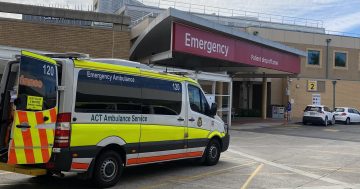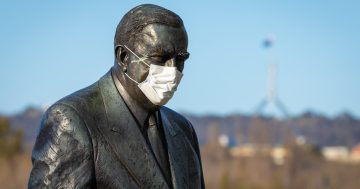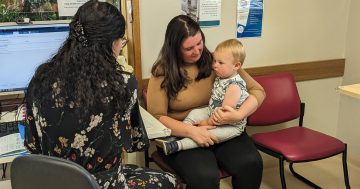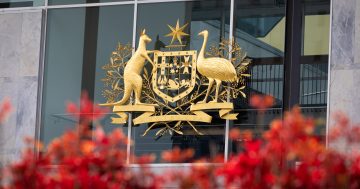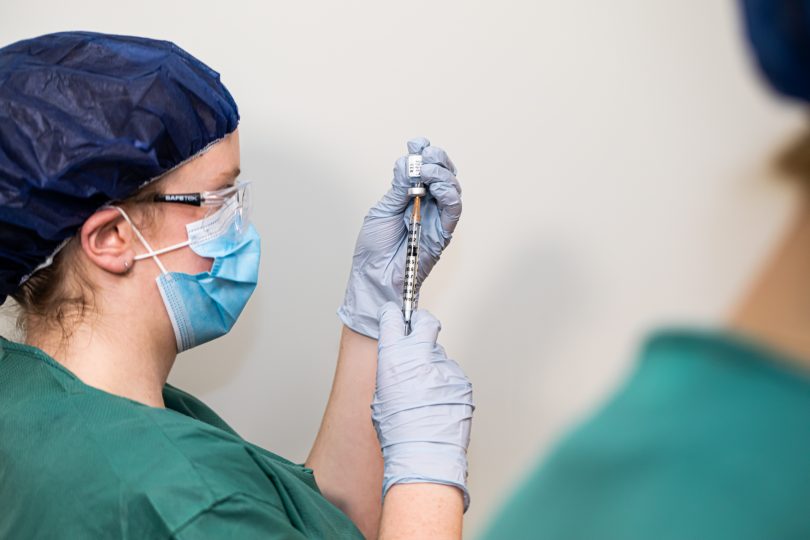
Almost 50 healthcare workers have been redeployed after refusing the COVID-19 vaccine. Photo: Michelle Kroll.
Forty-seven frontline healthcare workers across the ACT have indicated they will not receive a COVID-19 vaccine and, therefore, are not in compliance with the mandate currently in place.
Canberra Health Services interim CEO Dave Peffer told a select committee into the COVID-19 response yesterday afternoon that 23 of these workers have already been redeployed into non-patient-facing roles.
Speaking at a press briefing this afternoon (2 November), Deputy Chief Health Officer Dr Vanessa Johnston said she wasn’t overly concerned about “47 out of several thousands of healthcare workers” refusing the vaccine.
She also said some of these people may only have been granted short-term exemptions, and these may need to be reviewed in six months or so.
For now, the ACT Government has committed to redeploy these workers; however, Dr Johnston said she imagined the COVID-19 vaccine mandate for healthcare workers would eventually be mandated under Work Health and Safety obligations, “for at least certain staff members in some settings”, as other vaccines already are.
As of last Friday, CHS was waiting to confirm the vaccination status of 327 people, but this was quickly whittled down to 60 by Monday.
Under the mandate, healthcare workers were required to provide evidence of the first dose of a COVID-19 vaccine by Friday, 29 October, and a second dose by Wednesday, 1 December.
Anybody who enters a hospital, a Canberra Health Services facility, hospice or is a patient transport worker is covered by the mandate.
Mr Peffer acknowledged some grey areas, but these are being worked through on an individual basis.
ACT Chief Health Officer Dr Kerryn Coleman said despite high vaccination coverage of healthcare workers (more than 95 per cent are vaccinated), the impact of the introduction of a COVID case to healthcare settings could be “significant” and so a mandate was deemed necessary.
“We’re also aware that we have some very sick people, and they deserve and expect to be safe when they come into hospital,” Dr Coleman told the committee.
Mr Peffer added Canberra Health Services had an obligation to patients to ensure their safety, and a vaccine mandate had been one way to ensure this.
Dr Coleman said while the ACT had not gone down the same path as other jurisdictions with a widespread vaccine mandate, there are some settings in which the implications of having one or two people unvaccinated are significant.
One of the significant implications for healthcare settings, she explained, was the possibility of a workforce shortage if a positive case was identified.
Mr Peffer said the impacts of a reduced workforce attempting to carry a full load if several people needed to quarantine could negatively impact people’s physical and mental wellbeing.
The ACT Government has mandated vaccines for disability support workers and teachers who work with children under 12.
The Chief Health Officer said no further industry mandates were being considered at this time.
At a budget estimates hearing two weeks ago, Dr Coleman said the current vaccine mandates are only valid until the public health emergency is stood down.
This comes to an end in mid-November but is expected to be extended by another three months, Health Minister Rachel Stephen-Smith said yesterday.
Today she said extending it is an “important step … in ensuring measures like isolation and quarantine continue to have effect” and noted the virus will continue to spread through the population despite the Territory’s world-leading vaccination rates.
Ms Stephen-Smith added that while some of the vaccine mandates are flexible, the one for teachers will end at the end of December, and will need to be renewed if it’s decided that it’s necessary next year.
“That’s about recognising that there is likely to be a vaccine available for children under 12 by this time,” she said.
Ms Stephen-Smith flagged once again that legislative amendments to the Public Health Act are underway so it can continue to be used to respond to the pandemic.
Dr Coleman said one consideration would be the lack of a vaccine for under-12s and what happens when domestic and international borders are fully open once more.













